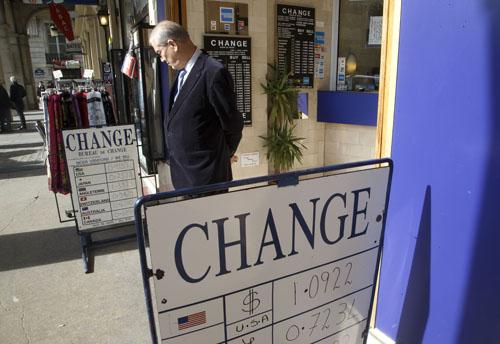You are here
IMF paints dim picture for Europe, suggests more money printing may be needed
By Reuters - Jul 27,2015 - Last updated at Jul 27,2015
BRUSSELS/FRANKFURT — The International Monetary Fund (IMF) warned on Monday that the eurozone’s prospects were modest and that more money printing than planned may be needed.
Contrasting the IMF’s relative gloom, however, German think tank Ifo reported improving confidence in the 19-country bloc’s largest economy.
The IMF, saying medium-term growth would be subdued, urged the European Central Bank (ECB) to keep its money presses rolling, perhaps beyond the target late next year.
“The important thing is that the ECB intends to stay the course until September 2016 and that, we think, will be necessary,” said Mahmood Pradhan, deputy director of the IMF’s European department, referring to quantitative easing (QE).
Letting the 1 trillion euro ($1.1 trillion) plus scheme to buy chiefly government bonds run longer could be better still, he suggested.
“It may need to go beyond that,” he said.
Worries about the global economy, prompted by a slowdown in China where shares slid more than 8 per cent on Monday, are weighing on many countries in Europe.
Manufacturing confidence in the Netherlands, with huge exposure to international trade though several of Europe’s largest ports, slipped back in July, reflecting pessimism among companies over the prospects for the coming three months.
Finnish consumer and industry confidence also weakened in July compared to the previous month.
But the data was mixed, with the positive Ifo report on German business confidence after two monthly drops and the ECB reporting a boom in lending for home buyers, which could bolster the bloc’s economy.
Struggle
The ECB also said its M3 measure of money circulating in the eurozone, which is often an early indicator of future economic activity, grew by 5 per cent in June, in line with the previous month.
But lending to companies fell by 0.2 per cent in June. This was a slower pace of decline for the 11th month in a row, but still suggested most of the ECB’s largest is going to consumers not companies.
In its report on the eurozone, the IMF said the bloc was getting stronger thanks to lower oil prices, a weaker euro and central bank action, but that medium-term prospects were for an average potential growth of just 1 per cent.
The IMF said euro area gross domestic product should accelerate to 1.7 per cent next year from 1.5 per cent in 2015, with inflation of 1.1 per cent from zero.
Pradhan warned, however, that “a chronic lack of demand, impaired corporate and bank balance sheets, and weak productivity continue to hold back employment and investment”.
Potential growth, at an average of only 1 per cent over the medium term, was well below what is needed to reduce unemployment to acceptable levels in many countries, it said, adding that the euro area was vulnerable.
Reforms were also needed to improve labour markets and productivity.
“In the euro area, the important area is structural reforms. This is where the euro area, when compared to countries in the Organisation for Economic Cooperation and Development, for example, is lagging behind,” Pradhan said.
Related Articles
The International Monetary Fund (IMF) cut its 2014 growth forecast for the eurozone on Monday, warning that the recovery in the single currency bloc was “neither robust nor sufficiently strong”.
Growth in emerging markets will slow for a fifth consecutive year, the International Monetary Fund (IMF) said Tuesday, as exchange rate swings and oil prices plunge, and China’s economic growth slows.
The euro tumbled through the $1.09 level to strike a fresh 11.5-year low Friday as the ECB nears the launch of its massive stimulus package and strong US jobs data raises the possibility of a US rate hike soon.












